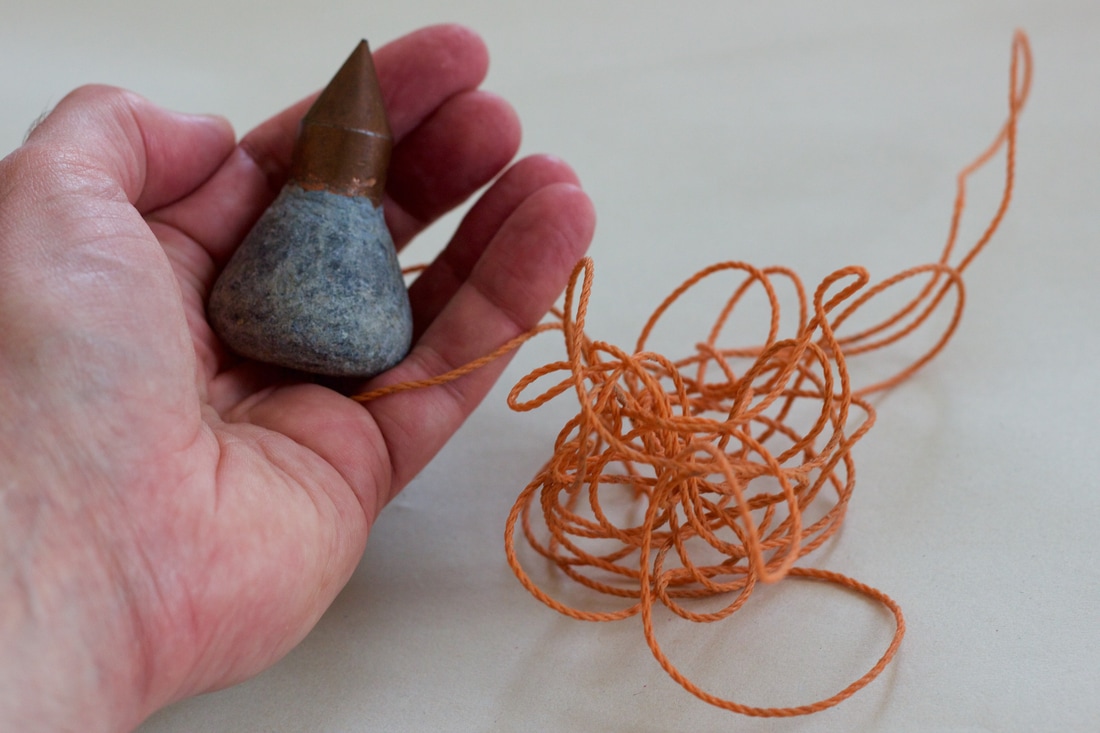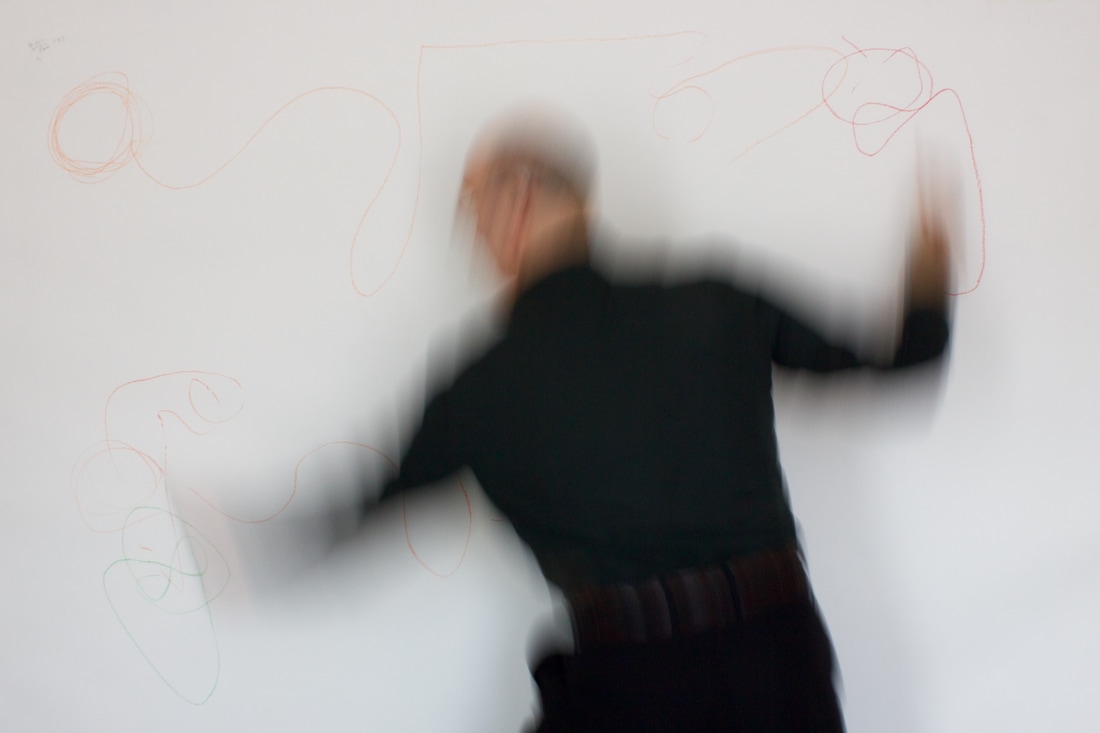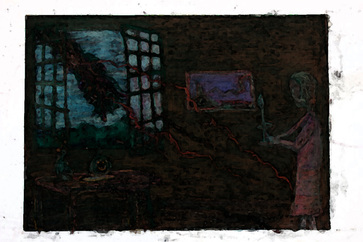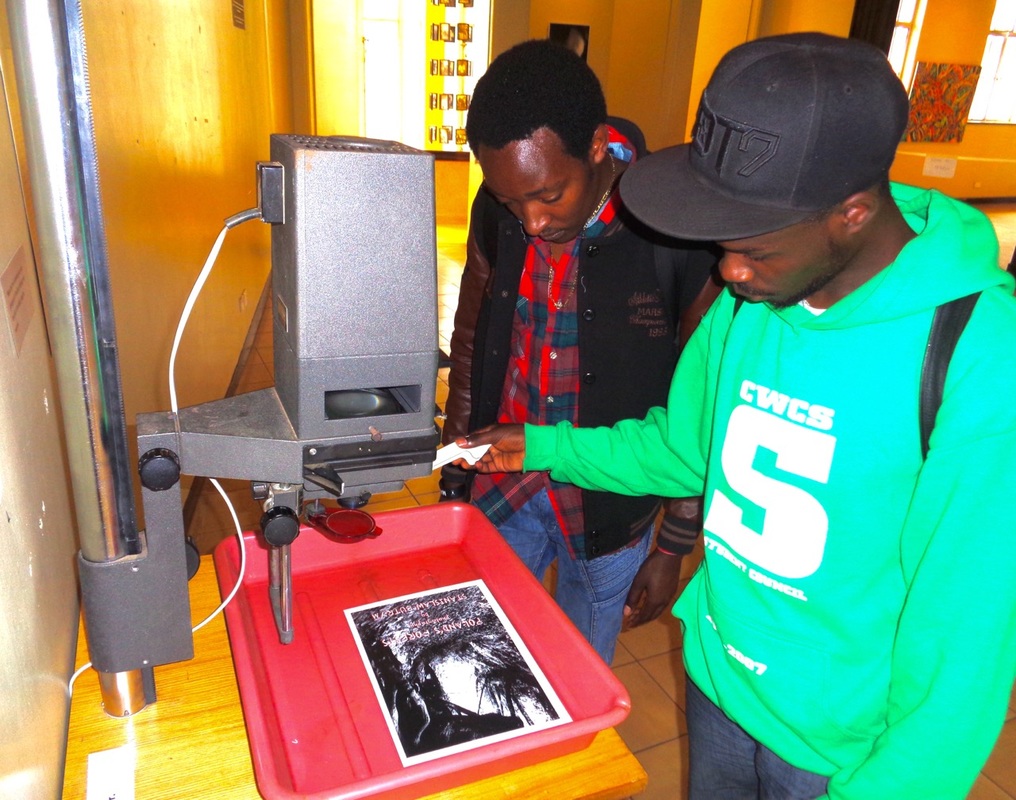|
This is an arts project about the history of the Coronet Theatre from 1872-2017. The ghostly presence of a Victorian actress, Marie Henderson, will be our guiding muse. The Melodramatic Elephant in the Haunted Castle will be both a performance piece and an exhibition. The play will be staged at the Coronet on the 7 November 2017. The exhibition will take place at Artworks Gallery from 11-23 November 2017 Our project is a collaboration between a visual artist, theatre director, actors and residents of Southwark. The work will be made available to future audiences by being deposited at Southwark Archives. The Melodramatic Elephant in the Haunted Castle is the culmination of several years of research into the history of the Coronet. It has a deep-focus on the actress, Marie Henderson, who has hitherto been consigned to the margins of academia. Our challenge is to creatively bring her to life: the pleasures and pains, the life-pangs of a Victorian actress; one who transfixed her audiences with performances that put the oomph of drama into "melos." She will be ghost skating through our artistic timeline, materialising at pivotal moments in the history of the Coronet. This might include the WW2 Blitz and a coda section when Marie trips the light fantastic with raving clubbers. She will transport us from the age of corsets and crinoline to silicon implants, from Bedlam to Brexit and beyond. I will be using drawings as a medium to explore ideas and emotions, akin to a visual storyboard. The aim is to produce a narrative body of expressionistic imagery that responds to the architectural spaces of the Coronet and poignantly documents its final heart beat. Because our project is fundamentally sociable and public, there is the challenge of inspiring others to participate in the process of making and thinking. I look forward to sketching out the memories and experiences of people who once visited the Coronet as a cinema and those who still club today and sent into a trance with the musical beat. The icing on the cake would be discovering a senior resident, one who is over 100 years of age, who has a story to tell about the Coronet when it was a theatre. Collaborating with John Whelan and the People's Theatre Company is top of my creative agenda. John has worked on history-based community arts projects in Southwark, but probably none on this scale and ambition. The durational nature of this project will allow John and the actors to become more involved in the development of a poetic play about the history of the Coronet and even get to source their own period clothing in more nuanced detail. John and I will be exploring ideas and themes of mutual interest. For example, the origins of theatre and how this fused with music to create the melodramatic play and its link to cinematic forms of expression; my educational background was in film studies. We want to show how performance and melodrama are still relevant in contemporary society. Double bill film poster for The Crimes of Stephen Hawke and the House of Mortal Sin Melodrama meets horror, Tod Slaughter slices Pete Walker, 1930s resonates with 1970s Oil pastel, 40x64 inches, 2013 Sketching the spirits that inhabit a staircase at the Coronet, 2017 Blog entries: Shop till the zombie drops Cultural memories of the railway arches and the shopping centre at the Elephant and Castle seem ripe for melodrama and horror. Faith, Hope and Charity The life of Marie Henderson and the melodramatic play she starred in called Faith, Hope and Charity which introduced ghostly special effects on to the Victorian stage. The play is a domestic drama, with three murders, one suicide, two conflagrations, four robberies, one virtuous lawyer, 23 angels, and a ghost. Singing and sketching in the rain At the Walworth street festival on 22 July 2017, children sketch images for a scale model of the Coronet and adults talk about their memories of going to the venue when it was an ABC cinema. History and legacy of Melodrama Professor Jim Davis and Dr Janice Norwood provide a fascinating overview of melodrama's rich diversity and defining characteristics. We discover that melodrama was one of the most popular forms of entertainment in the 19th century. Although it was often dismissed as a cultural product, there is a growing awareness of its importance and how it influenced both film and TV. Melodrama Workshop - Introduction We had great fun with it, as it allowed our imaginations to run riot. The only rule we followed was that each beat of the scene had to heighten dramatic tension - preferably through the means of some jaw-dropping revelation. Carolyn Cronin from the People's Company - Masks! I realised how masks conceal the wearer: you’d expect to see their eyes and mouths behind them, but you can’t – the mask itself is the focus. Interview with Sam Porter, manager at the Coronet I’ve walked around this building on my own, at night, in pitch black, with just the little fire lights on and not felt uncomfortable at all. Apart from one space. Culture and Capital at the Elephant and Castle What makes the E&C Theatre important was that melodrama was established and maintained here when other theatres either adapted to contemporary dramatic fashions or succumbed to the cinema; it even achieved a brilliant burst of fame in 1927.
0 Comments
82 x 56 inches. Oil pastel, pencil. 2017. Poem to a drawing Are we walking down a corridor in the National Portrait gallery? Walls lined with the great and good who have killed and conquered. This is all rather tiring and I am looking for somewhere to sit. Commotion in a room ahead, left or right? A gust of wind blows us into the Euro wing. We see a mother and child with candle and umbrella. A man checks his flies are zipped. Above his head, a tricolour ink roller in suspended animation. On the ground, footprints of Prussian blue. Centre stage, chaise lounge. What is going on? Can we sit here? Maybe in the next room, next to a woman and her copy of J. G. Ballard's The Atrocity Exhibition. In front of a painting of the British Prime Minister getting fruity with the American President. Hold on! Is that Robert Rauschenberg trapped in twine from a plumb bob? He appears to be pointing backwards and forward, one hand to 1974, the other, 2019. Can we trust an artist to TELL US EVERYTHING about this space within space That has spilled out from a box labelled Highland Shortbread? Where can I sit? My legs are killing me. Notes to myself This was sketched immediately after visiting the excellent Robert Rauschenberg exhibition at Tate Modern and during the United Kingdom government's formal notification of withdrawal from the European Union. This was also the week when The Daily Mail newspaper on March 28th featured a photo of Theresa May and Nicola Sturgeon with the trivialising head line: “Never mind Brexit, who won Legs-it!”. On the same day, a new 12-sided £1 coin became legal tender across the UK. Pondering all these matters, I started to sketch a scene using Robert Rauschenberg as an enigmatic muse. His free and easy approach to materials, for example, building an umbrella or fan into a painted surface, had me thinking about how to use everyday objects as part of my art practice. I turned to a biscuit tin in my studio. I don't know why I started to collect objects in a biscuit tin or how long they have accumulated (more than a decade now), but this box with random objects ranging from coins, fuses, tea coaster, plumb bob, pencil emblazoned with "Tell me everything," was raided for inspiration and incorporated into the drawing. This was my equivalent to Rauschenberg's "combine" although I have made no concession to three dimensionality. There is added irony in that the box has a culinary connection with Scotland; a nation destined to have a falling out with the English over the issue of falling out of Europe. All these objects and related ideas came tumbling out of the box and into the composition. Some other allusions for the cultural critic to register:
A film can haunt you in many different ways. In 1978, an excited boy and his overworked parents trek down to the Odeon, Leicester Square. No, not the previous summer-smash Star Wars, but it's more domesticated twin, Close Encounters. Inspired by The Third Kind, he would travel home counting every twinkling light of air traffic as an alien ship passing in the night sky. A fifteen year old is skipping across the ground level section of Westway (A40) and bunking into an X-rated double bill of Terror and Savage Weekend. It's 1981 and the last gasp of the ABC cinema at Edgware Road. Young men are performing a ritual of daring each other to grin through slit throats and dismembered heads. Jump cut. That boy-teen-man is now projecting a 35mm print of Peeping Tom to sleepy film and literature students at the University of Warwick. He is anxiously waiting for cue dots to appear. After effecting a change of reel, seated alone beside a small aperture in the booth, he looks out across the illuminated heads, several bobbing down to new planes of consciousness. The projectionist is transfixed by the imagery on the screen showing a movie camera that has been turned into a deadly weapon. Yes. Those are all my hauntings and they still persist to haunt. This year of slow motion into middle age has lead to a reappraisal of the Italian director, Mario Bava. His richly lensed films were discovered online where there are collective opportunities for the young and old alike to be haunted or re-haunted. This past year has seen the passing of the great Christopher Lee. I kept YouTubing majestic scenes from Bava's The Whip and the Body. In particular, there is a compelling sequence when the heroine is being drawn to the S&M ghost of Lee down a darkened corridor by the constant cracking of a whip. Cinematic magic. As a practising multi-media artist this "haunted" quality only manifests itself in drawings and unpublished or unrealised screenplays. I share a few of the former with you. Although my lips are temporarily sealed on the latter, I do wish to share a few thoughts about a seasonal haunting, Quatermass and the Pit (1967). QM is a great British science-fiction film, bristling with bold ideas and told in a vivid fashion. The electronic sound effects by Tristram Cary, combined with effective direction by Roy Ward Baker and compelling performances, makes this a haunting of hauntings. The film is also part of the rich cultural tapestry of Hammer studios before that fizzled out in the 1970s. An older generation would have experienced the Nigel Kneale's Quatermass stories (of which Pit is the third in the series) when broadcast by the BBC in the 1950s. These are rightly regarded as landmark moments in British television. Enthusiasm aside, I want to talk about the haunting engendered by Quatermass and the Pit. This has a very specific past, present and future. Past tense. I have a ghostly memory which can be precisely dated to Christmas Day, 1973. This turbulent period in British politics would see industrial disputes, three day working weeks, power cuts, and a country grinding to a halt. I can still feel the bones of those darkened and cold spaces. This was the perfect setting for an impressionable seven year old to be spooked on Christmas Day when Quatermass and the Pit was shown as the main late night adult film on BBC2. I seem to recall watching this film alone. Where had my family disappeared to? Had they been swallowed up by the gut of seasonal excess? It matters not, for the film exerted a pulsating grip especially in its claustrophobic evocation of the London underground where a mysterious object is discovered and which unleases atavistic impulses in the human mind. Present tense. As a homage to that 1973 haunting, I decided to photograph a recent transmission of Quatermass which took place on 20tht December 2015. Towards the end of the film, the television underwent a spectrum change with its cathode ray tube. The green light waves completely swamped the reds and blues. I am still trying to interpret the significance of this haunting and I present documentary evidence for your perusal. The TV box on the following Boxing day was as right as rain. Future tense. Quatermass and the Pit is older than Time Lords and Jedi knights. It is begging for a new leash of life and I wonder if the current Hammer Films might be thinking about a re-make. If they do, they will be hard pressed to beat the original TV and film adaptions. Special effects will be a different kettle of fish however. Hopefully a new generation of writers and film makers will discovery the original and use it as source material to create their own narratives. I've just started mapping out a new screenplay called Glass Kill in which medi-EVIL stained glass is discovered in the London underground. Hauntings can come in all manner of tea cups or flying saucers and is not exclusive to the horror genre. If you want to catch a fascinating blast of gallery based hauntings, I point you no further than the sublime Susan Hiller who is showing at the Lisson Gallery until the 9th January. She has described her work as an "archaeological investigation, uncovering something to make a different sense of it." Here you will find an eclectic probing into the real and the unreal, the memory of ghosts and the ghost of memories. Of particular interest is Wild Talents (1997). This is a multi screen video installation that shows paranormal phenomena in a range of American and European horror films and this is juxtaposed with a small monitor showing a documentary about children who have religious visions. Three sets of images are unfolding in the same time and space. Haunting is all about the co-existance of past, present and future. Quatermass and the Pit airs next on the Horror Channel on: Thursday 31st December @ 22:55 Saturday 23rd January @ 22:00 Wednesday 27th January @ 22:00 A though-provoking exhibition about the future of Kenyan forests is currently showing at the National Museum in Nairobi. It has been conceived and curated by the renowned film maker Jacob Barua. Let us listen to him as he guides us on a journey through this exhibition which is also an installation and happening. "Nearly half of this exhibition comprises photography of forests by the late Stan Butrym. He was recognised as one of the first Polish pioneers in the field of championing forests as an source of aesthetic inspiration. He has supremely captured the almost fairytale, eerie and surreal ambience of these Polish forests." "Poland's forests are majestic and mysterious. The last remaining primeval forest in Europe has survived only in Poland and was named a UNESCO World Heritage Site and an incredible 29% of its territory is covered by forests. The oldest documented tree in Poland is 1250 years old. The fauna is equally astounding as it is the only country in Europe with freely roaming bison, lynx, bears, boars, wolves and other animals. Over 500 years ago Polish Kings were among the first in the World to create environmental enclaves, having officially placed many forests under Royal protection." "However the main message of this show is not so much the factual beauty of Polish forests, but an attempt to provoke Kenyans into loving their own forests. As you walk around the display you will encounter numerous suitcases each with tree seedlings. These are Kenyan indigenous species that are on the verge of extinction. I made the selection by closely consulting with top Kenyan botanists to get this right. Kenya is becoming one big Australian forest. We have decided to opt for species from down under. and no longer plants local ones. There's a widespread belief that Australian trees grow faster and give better yields. The scientists I have interacted with say this is a baseless myth. But then how do you tackle a myth once it grows roots?" "There are also books on benches as this is meant to be a "Departures Lounge" on an eco journey. I thought in particular Wangari Maathai and Lech Walesa were relevant to the event. Wangari had her head slashed with a machete during her long fight to save Kenyan and world forests. While on the other hand we have an electrician who helped topple a system that didn't care at all for the environment. Here I am showing that whatever station you have in life, you can make a difference to humanity as a single determined individual. " "Even audio performances are used as impromptu happenings to enhance the entire event. I literally grab visitors with whatever skills or talents they have and invite them to do something that becomes intrinsically a part of the whole. The kids from the Jirani Children's Choir were truly great. They come from a slum called Dandora in Nairobi which has the largest garbage dump in the city and children forage through it. Such kids as those in the choir have been literally plucked out of this humongous festering un-environmental mountain of poverty, through the sheer angelic nature of their voices. Out of the largest garbage mountain in Kenya comes inspiration, beauty and promise." "The show has also turned out to be a hit with ordinary Kenyans. The Museum is one of the few places working class Kenyans can afford to take their entire family on an outing. Youngsters have given me inspiration. Many have told me or written in the visitor's book that they will now start planting indigenous trees and also tell their teachers that they should do so." "Our tree species are on a grand Safari; out into the realm of History." Photography and text kindly reproduced by Jacob Barua. The exhibition runs from the 21st November 2015 to the 21st December 2015 at the National Museum of Kenya. |
Categories
All
Archives
May 2024
|




























 RSS Feed
RSS Feed
